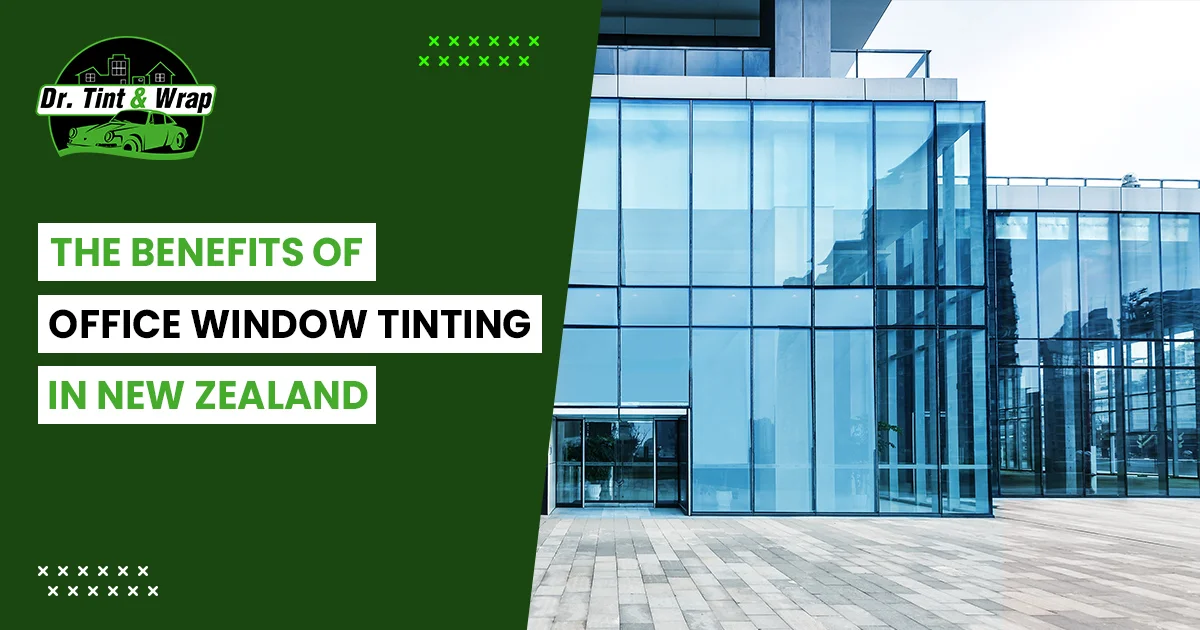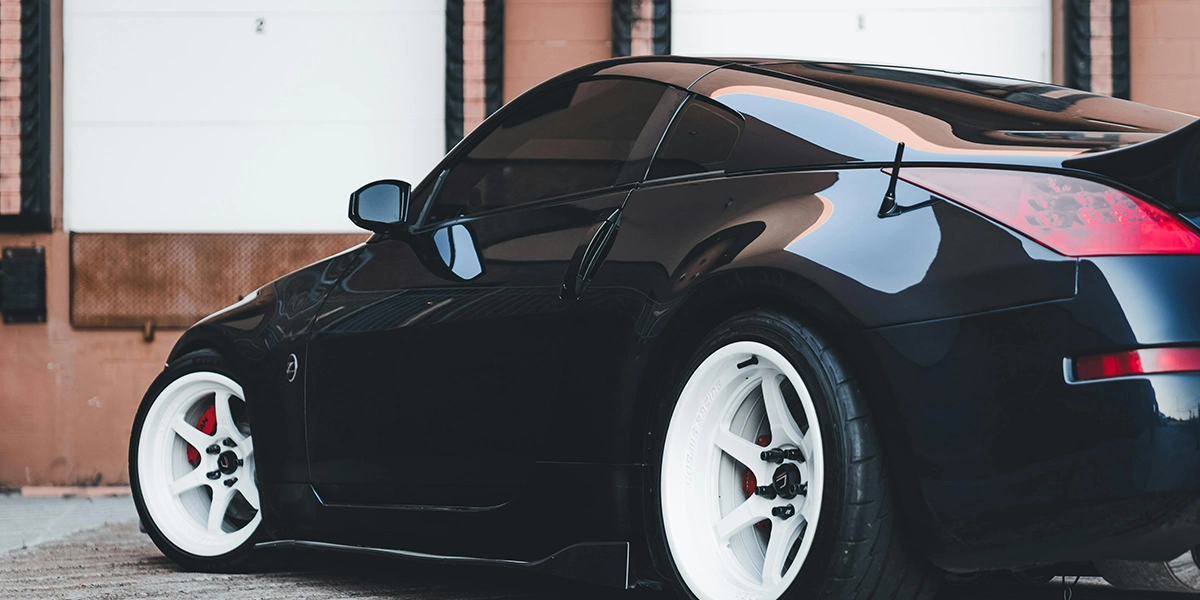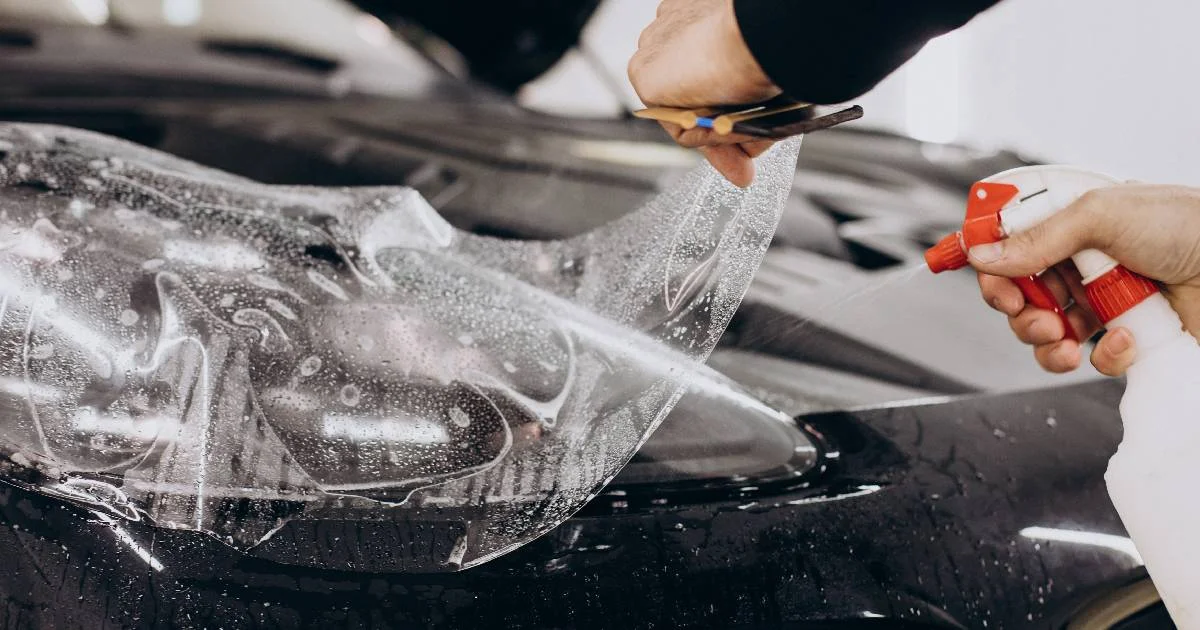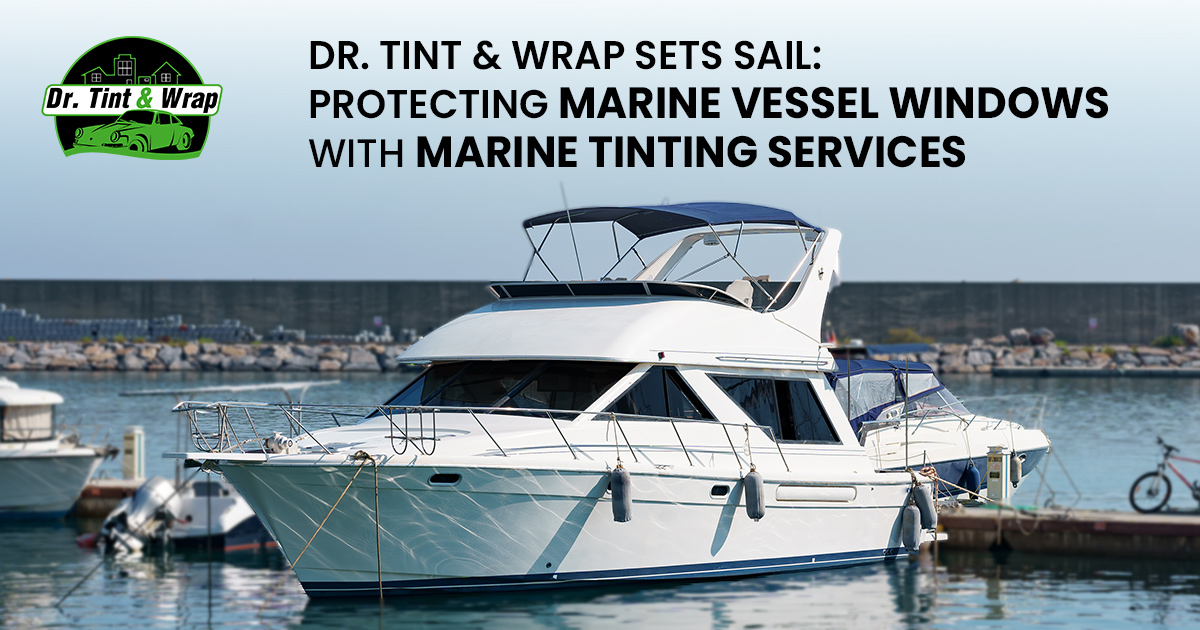
The Benefits of Office Window Tinting in New Zealand
15 Sep 2023, By AdminWhen it comes to enhancing the comfort and functionality of your home, window tinting is a solution that often goes unnoticed. In New Zealand, where climate variations are common, the benefits of home window tinting extend far beyond aesthetic appeal. In this article, we'll explore how home window tinting can significantly reduce your energy bills and lead to long-term cost savings, making it a smart investment for homeowners across the country.
Understanding the Energy Efficiency of Window Tinting
New Zealand experiences a range of weather conditions throughout the year, from scorching summers to chilly winters. During these extremes, the energy used to regulate indoor temperatures can skyrocket. This is where window tinting comes into play.
1. Heat Reduction: One of the primary benefits of window tinting is its ability to reduce heat gain. Tinted windows block a significant portion of the sun's heat and harmful UV rays from entering your home. As a result, your indoor spaces remain cooler during hot summer months, reducing the need for air conditioning.
2. Insulation: Window tinting also provides insulation benefits, helping to maintain a consistent indoor temperature. In winter, it helps to keep warmth inside, reducing the need for excessive heating.
Cost Savings Through Window Tinting
Now, let's delve into how these energy-efficient qualities translate into tangible cost savings for homeowners in New Zealand.
1. Lower Energy Bills: By reducing heat gain during the summer and heat loss during the winter, window tinting significantly reduces your reliance on heating and cooling systems. As a result, you'll see a noticeable drop in your energy bills year-round.
2. Extended Appliance Lifespan: Reduced reliance on air conditioners and heaters not only saves you money on electricity but also extends the lifespan of these appliances. They don't have to work as hard, which means fewer repairs and replacements.
3. Furniture and Flooring Preservation: Window tinting also blocks harmful UV rays that can cause fading and damage to your furniture, flooring, and décor. This means you won't have to spend as much on replacing or refurbishing these items.
4. Enhanced Home Value: A home with energy-efficient features like window tinting can command a higher resale value in the New
Zealand real estate market. Potential buyers are often willing to pay more for a home with reduced energy costs.
In New Zealand, where energy efficiency and sustainability are becoming increasingly important, home window tinting stands out as a practical investment for homeowners. By reducing energy bills, extending the lifespan of appliances, preserving your interior, and enhancing your home's value, window tinting offers numerous long-term cost-saving benefits.
So, if you're looking to make your New Zealand home more energy-efficient and cost-effective, consider investing in professional window tinting services. Not only will you enjoy a more comfortable living space, but you'll also contribute to a greener and more sustainable future while saving money in the process.

What is Car Tint and how much does it cost in Auckland
15 Sep 2023, By AdminCar tint is a thin film applied to vehicle windows that helps control the amount of light and heat entering the car's interior. Available in various shades and levels of darkness, car tint offers a range of benefits, including increased privacy, UV protection, and heat reduction. It can reduce glare, shield upholstery and interior surfaces from sun damage, and improve energy efficiency. Additionally, tinted windows can enhance a vehicle's appearance and safety by providing extra shatter resistance in case of an accident. However, it's important to be aware of and comply with local car tinting laws and regulations to avoid fines or penalties.
What Are the Benefits of Car Tint?
Car tinting offers several advantages for vehicle owners in New Zealand. A major benefit is improved privacy, as tinted windows make it harder for others to see inside the vehicle, which is particularly useful for those who keep valuables in their car.
Another advantage is reduced glare. Tinted windows cut down on the amount of sunlight entering the vehicle, minimizing glare and creating a more comfortable driving experience, especially on sunny days or for those with sensitive eyes.
Car tinting also provides enhanced UV protection. By blocking harmful UV rays, car tint helps protect both skin and eyes from sun damage. This is especially important in New Zealand, where high UV levels contribute to elevated skin cancer rates.
Additionally, tinted windows improve comfort by regulating the vehicle's interior temperature. By reducing heat buildup, car tint decreases reliance on air conditioning, which can enhance fuel efficiency.
Finally, car tinting boosts a vehicle's aesthetic appeal. It adds a sleek, sophisticated look to any car, from station wagons to sports cars, with various shades and styles available to match individual preferences and vehicle types.
In summary, car tinting in New Zealand offers enhanced privacy, reduced glare, increased UV protection, improved comfort, and an upgraded appearance, making it a popular choice among vehicle owners.
Cost Factors for Car Tinting in New Zealand
Several factors can affect the cost of car tinting in New Zealand. One of the primary considerations is the size of the vehicle and the number of windows to be tinted. Larger vehicles, such as SUVs or vans, generally require more materials and labor, leading to higher costs. The type and quality of the tinting film also play a significant role in pricing. Standard tints are typically more affordable, while high-performance ceramic films, known for their superior heat and UV-blocking properties, are more expensive. The desired darkness or level of tint can also influence the cost, as darker tints may require additional layers. Additionally, the reputation and expertise of the tinting service provider can impact the price. Choosing a reputable, experienced professional may cost more but ensures high-quality installation without defects or damage. Considering these factors can help car owners make informed decisions and find a balance between their budget and the desired benefits of car tinting.
Types of Car Tint
Car tinting involves applying a thin, transparent film to vehicle windows. In New Zealand, various types of car tint are available to suit different needs and preferences, each offering distinct characteristics and benefits:
- Dyed Films: These are the most common and cost-effective options. They reduce sunlight and glare, enhance interior comfort, and offer some UV protection.
- Metallic Films: These films contain metalized particles that improve heat rejection and glare reduction. They are well-suited for hot climates and sunny conditions.
- Carbon Films: Known for excellent UV protection and heat rejection, carbon films do not interfere with electronic devices and offer good visibility with high light transmittance.
- Ceramic Films: Advanced ceramic films provide the highest level of heat rejection without affecting electronic signals. They offer exceptional UV protection, reduce glare, and maintain excellent visibility.
- Crystalline Films: Crystalline films are the top-of-the-line option. Crystal films provide extreme heat rejection while ensuring maximum visibility and a clear appearance. Although they are more expensive, they deliver the ultimate driving experience.
When choosing the right car tint film for your vehicle, consider factors such as heat rejection, UV protection, visibility, and your personal preferences. Consulting with a professional window tinting service can help you select the best option for your needs.
Size of Vehicle Windows
The cost of car tinting is significantly influenced by the size of your vehicle's windows. Larger windows, such as rear windshields, typically involve higher expenses due to the need for more tinting film and increased labor. The greater surface area requires additional materials and more time to apply the film properly.
Smaller windows, on the other hand, need less film, which can lead to lower costs. The complexity of applying tint to larger windows, which often involves more meticulous work to ensure complete coverage, also contributes to higher costs.
When budgeting for car tinting, consider the size of your vehicle's windows. Larger windows, especially rear windshields, generally result in higher costs due to the increased material and labor required. For an accurate estimate based on your vehicle and window sizes, it's best to consult with a professional tinting service.
Number of Windows to be Tinted
The number of windows to be tinted varies depending on the size and type of the vehicle. Smaller vehicles, like sedans and hatchbacks, typically have a standard set of four windows: the front and rear side windows, and the rear windshield.
Larger vehicles, such as SUVs, vans, and station wagons, often have additional windows, including rear side windows and extra windows found in passenger vans. Tinting all windows enhances privacy and security, especially for larger vehicles, by making it more difficult for potential thieves to see inside and assess the value of items left in the car.
Tinting also provides optimal UV protection and reduces glare, protecting the vehicle’s interior from fading and decreasing the risk of skin damage. Additionally, it improves driving comfort by reducing glare from the sun.
In summary, the number of windows to be tinted depends on the vehicle's size and type. Tinting all windows offers benefits like increased privacy, enhanced security, UV protection, and glare reduction.
Quality of Window Film
The quality of window film is influenced by several factors. One key aspect is whether the film comes with a manufacturer's warranty, which ensures that the film meets certain standards and will perform as expected.
Another important factor is the optical clarity of the film. High-quality films should provide excellent visibility both during the day and at night, whereas poor-quality films may distort the view, potentially affecting driving safety.
It’s also crucial to consider any allowable modifications. Some films may offer options for additional tinted overlays, enhancing privacy and aesthetics. However, it’s important to ensure that any modifications comply with local legal restrictions.
Understanding the legal regulations regarding window tinting is essential, as different regions may have specific laws governing the darkness of tints. Adhering to these regulations helps avoid fines and ensures safe vehicle operation.
In summary, the quality of window film is determined by factors such as the manufacturer's warranty, clarity, and allowable modifications. Choosing high-quality films that offer clear visibility and comply with legal standards ensures a safe and enjoyable driving experience.
Installation Process and Labor Costs
The car tinting installation process involves several steps, and labor costs can vary based on vehicle size and the number of windows. The process starts with thoroughly cleaning the windows to create a smooth surface for the tint.
Next, the tint film is precisely measured and cut to fit each window. Accurate cutting is crucial for a proper fit. The film is then carefully applied to the inside of the windows, with a professional installer ensuring that any wrinkles or air bubbles are removed for a seamless finish.
Labor costs typically reflect the time and expertise required for installation. Larger vehicles with more windows generally require more labor, resulting in higher costs.
For an accurate quote based on your vehicle and window requirements, it's advisable to consult with a reputable car tinting service.
Legal Limitations on Window Tints in New Zealand
In New Zealand, window tinting must adhere to specific legal restrictions to ensure road safety. The New Zealand Transport Agency (NZTA) regulates the darkness of window tints through Visible Light Transmission (VLT) percentages. For front-side windows and windshields, the law requires a minimum of 35% VLT, meaning that at least 35% of visible light must pass through. Rear side windows and rear windshields also have a minimum VLT of 35% or darker, though these percentages are not cumulative. Reflective tints are prohibited.
To avoid fines and ensure compliance with New Zealand’s window tinting laws, vehicle owners should follow these regulations closely. Consulting a professional tinting service can help ensure that your vehicle meets legal requirements.
VLT Requirements for Passenger Vehicles and Vans in NZ
In New Zealand, Visible Light Transmittance (VLT) regulations vary for passenger vehicles and vans:
- Passenger Vehicles: The front windscreen and front side windows must have a VLT of at least 35%, allowing 35% of visible light to pass through. There are no specific VLT requirements for the rear side windows or rear windscreen, so they can be tinted darker if desired.
- Vans: The front windscreen must also meet the 35% VLT requirement. However, all other windows on vans, including the front side, rear side, and rear windscreen, must have a minimum VLT of 20%, allowing less visible light to pass through compared to passenger vehicles.
To ensure compliance with these regulations, glazing markings are often used on window films. These markings indicate the VLT percentage, making it easier for drivers and law enforcement to verify compliance.
Adhering to VLT requirements not only ensures legal compliance but also enhances driving comfort by reducing glare and providing UV protection while maintaining sufficient visibility for the driver.
Considerations for Sun Visors, Rear View Mirrors, and Windshields
Sun visors are designed to block direct sunlight and reduce glare, but tinting them is not recommended. Tinting can impair their function, which is to provide clear and unobstructed visibility.
Rear view mirrors must remain unaffected by window tinting to ensure they provide a clear reflection of the road behind. Tinting the windshield can impact the mirror’s effectiveness and the overall visibility of other vehicles.
In New Zealand, tinting on the front windscreen is restricted to a narrow strip along the top, known as a sun visor band. This strip must be no wider than 10 centimeters and cannot extend below the AS1 line marked on the glass.
Additionally, rear view mirrors and other accessories, such as radio antennas or demister units, should not be obstructed by modifications. Glazing markings on window film help verify that VLT requirements are met, ensuring safety and compliance.
In summary, when tinting car windows, consider the functionality of sun visors, rear view mirrors, and windshields. Adhering to legal requirements for these components, using glazing markings, and choosing a reputable tint installer will ensure compliance with regulations and maintain safe driving conditions.
Types of Car Tinting Products Available in New Zealand
When selecting car tinting products in New Zealand, there are various options to suit different needs and preferences. Each type of tint offers unique benefits, enhancing both comfort and style.
Standard Tints Standard tints are a popular choice for those seeking UV protection and moderate privacy. They provide a balanced level of light transmission, allowing enough visibility while offering some shade from the sun’s glare.
Ceramic Films Ceramic films are renowned for their superior performance. They excel in heat rejection, significantly reducing the amount of heat that enters the vehicle, which helps to keep the interior cooler and can lead to fuel savings by reducing air conditioning use. Additionally, ceramic films offer excellent UV protection, safeguarding both occupants and the vehicle’s interior from harmful sun rays. These films also minimize glare, improving driving comfort and safety. Durable and resistant to fading, bubbling, and peeling, ceramic films are a long-lasting investment for vehicle owners.
Carbon Films Carbon films are favored for their outstanding heat rejection and UV protection. These films come in various shades, allowing you to select the level of tint that best suits your preferences. Carbon films help keep the vehicle’s interior cool and reduce reliance on air conditioning, contributing to fuel efficiency. They maintain good visibility both during the day and at night, making them a practical choice for enhancing driving comfort and safety.
Metal Films Metal films feature tiny metal particles embedded in the film, providing a reflective appearance. They are highly effective in rejecting heat and blocking UV rays, helping to keep the car’s interior cooler and preventing damage to upholstery and occupants’ skin. However, metal films can sometimes create glare and may interfere with electronic devices like GPS or mobile phones.
Popular Brands of Window Tint
In New Zealand, several reputable brands offer high-quality window tinting products. Among the most trusted are STEK, 3M, and Lumar.
- STEK: Known for its innovative and high-performance window films, STEK provides a range of options that cater to various needs, including advanced ceramic films for superior heat rejection and UV protection.
- 3M: A leading name in the tinting industry, 3M offers a diverse selection of window films that combine durability with excellent heat and UV protection. Their products are designed to enhance comfort while maintaining clarity and visibility.
- Lumar: Renowned for its high-quality and reliable window tints, Lumar provides a range of choices that deliver effective heat reduction and UV shielding, helping to preserve the vehicle’s interior and improve driving comfort.
Choosing a quality window tint from these reputable brands ensures superior performance, durability, and compliance with New Zealand’s tinting regulations. Although the initial cost may be higher, investing in a quality tint provides long-term benefits and enhances your driving experience.

How Much Does It Cost To Do Ppf On A Car ?
15 Sep 2023, By AdminIn the world of automotive enthusiasts and meticulous car owners, the quest for preserving a vehicle's pristine appearance often leads to the consideration of Paint Protection Film (PPF). Hamilton, with its vibrant automotive culture, has seen an increased interest in this cutting-edge technology. As car owners seek ways to shield their beloved vehicles from the rigors of daily driving and environmental hazards, understanding the costs associated with PPF becomes crucial. In this guide, we'll delve into the factors influencing the cost of PPF in Hamilton and provide insights into the value it offers.
What is Paint Protection Film?
Paint Protection Film, often referred to as PPF, is a transparent polyurethane film applied to the exterior surfaces of a vehicle to protect the paint from stone chips, bug splatter, bird droppings, road debris, and other environmental contaminants. It acts as an invisible shield, preserving the car's finish and maintaining its resale value
Factors Influencing PPF Costs in Hamilton
- Type and Quality of Film: The market offers various types and qualities of PPF, ranging from basic films to high-end, self-healing varieties. The cost of PPF can vary significantly based on the brand, thickness, and features of the film. Premium films may have a higher upfront cost but provide superior protection and durability.
- Size and Complexity of the Vehicle: Larger vehicles or those with complex body contours may require more PPF material and additional labor for installation. Sports cars, luxury vehicles, and SUVs typically have larger surface areas, influencing the overall cost.
- Installation Labor Costs: The skill and experience of the installer play a crucial role in the cost of PPF. Hamilton boasts several skilled professionals and their expertise may be reflected in the labor costs. However, choosing a reputable installer is essential to ensure proper application and optimal protection.
- Coverage Areas: Car owners can choose specific areas for PPF coverage, such as the full front end, hood, fenders, side mirrors, and more. The more extensive the coverage, the higher the overall cost. Some opt for a full-body wrap for comprehensive protection.
- Customization and Design: Some PPF installations involve customization, such as patterns, logos, or unique designs. These personalized touches can add to the overall cost but allow for a one-of-a-kind look while maintaining protection.
- Warranty and Aftercare: High-quality PPF often comes with extended warranties. The length and terms of the warranty can impact the upfront cost but provide peace of mind for car owners. Additionally, factoring in aftercare products for maintenance is essential to ensure the film's longevity.
How much does PPF typically cost in Hamilton?
The cost of PPF installation in Hamilton can vary based on several factors, including the size and model of your vehicle, the type of PPF used, and the complexity of the installation. On average, PPF Prices start from $1150. It's advisable to obtain quotes from reputable PPF installers in Hamilton for accurate pricing based on your specific car.
Investing in Paint Protection Film for your car in Hamilton is a strategic decision to safeguard your vehicle's aesthetics and resale value. The costs associated with PPF vary based on factors like the type of film, the size of the vehicle, labor, and customization options. While the initial investment may seem significant, the long-term benefits in terms of paint preservation and overall appearance make PPF a worthwhile consideration for car enthusiasts and those looking to protect their automotive investments in the vibrant city of Hamilton.

Dr. Tint & Wrap Sets Sail: Protecting Marine Vessel Windows with Marine Tinting Services
15 Sep 2023, By AdminKia ora, mates! If you're a proud boat owner in the stunning waters of Aotearoa, you know how important it is to keep your marine vessel in top-notch condition. New Zealand is known for its breathtaking coastline and pristine waters, making marine activities a way of life for many Kiwis. But, have you ever thought about the protection of your vessel's windows? Well, worry not, because Dr. Tint & Wrap has come to the rescue with their specialized marine tinting services!
Introducing Dr. Tint & Wrap
Dr. Tint & Wrap is a well-known name in the automotive and residential window tinting industry. They have earned a reputation for providing high-quality tinting solutions that not only enhance aesthetics but also offer numerous functional benefits. And now, they've expanded their expertise to the maritime world with their marine window tinting services.
Why Marine Tinting Matters
Before diving into the details of Dr. Tint & Wrap's marine tinting services, let's understand why tinting is crucial for your boat's windows. Marine vessels, whether you own a yacht, a fishing boat, or a jet ski, are constantly exposed to the harsh elements of the ocean. The intense UV rays, saltwater, and wind can take a toll on your boat's windows, leading to several issues:
1. Sun Damage: Prolonged exposure to UV rays can lead to fading and deterioration of interior materials, including upholstery, dashboard, and electronics.
2. Glare: Glare from the sun reflecting off the water can hinder your visibility, making navigation and fishing challenging.
3. Privacy and Security: Tinted windows not only offer privacy while on your vessel but also act as a deterrent to potential thieves.
4. Temperature Control: Tinted windows help regulate the temperature inside your boat, keeping it cooler in the scorching New Zealand sun.
5. Safety: In the unfortunate event of an accident or collision, tinted windows can help prevent shattered glass from causing injuries. Dr. Tint & Wrap's Marine Tinting Services
Dr. Tint & Wrap understands the unique challenges faced by marine vessels in New Zealand's waters. Their marine tinting services are tailored to address these challenges effectively. Here's what you can expect:
1. High-Quality Films: Dr. Tint & Wrap uses top-grade window films designed specifically for marine applications. These films offer superior UV protection, heat reduction, and glare control.
2. Professional Installation: Their team of experienced technicians ensures that the tinting is done with precision and attention to detail, guaranteeing a seamless finish.
3. Custom Solutions: Every boat is unique, and Dr. Tint & Wrap provides custom tinting solutions to meet your vessel's specific needs.
4. Long-Lasting Results: With their marine window tinting, you can expect the tint to last for years, resisting the harsh conditions of the ocean.
5. Compliance with Regulations: Dr. Tint & Wrap ensures that the tinting complies with New Zealand's maritime regulations, so you can enjoy peace of mind knowing your vessel is legal and safe.
Marine tinting is not just about aesthetics; it's about protecting your investment and enhancing your boating experience. Dr. Tint & Wrap's marine window tinting services bring their expertise to the maritime world, helping boat owners across New Zealand safeguard their vessels from the elements while enjoying the beauty of our pristine waters.
Don't wait until the sun takes its toll on your boat's windows. Contact Dr. Tint & Wrap today to explore how their marine tinting services can elevate your boating experience and keep your vessel looking and performing its best. Protect your boat, protect your investment, and sail the stunning waters of Aotearoa in style with Dr. Tint & Wrap!
